
Scott One-Upped Himself In 1978
Steve Scott had no chance to win a fourth-straight NCAA Division II 1500-meter title in 1978.
That’s because UC Irvine had moved up to Division I.
However, Scott had already shown he was more than ready for the challenge in 1977, when he finished as runner-up at the NCAA Division I meet a week after becoming the first NCAA DII athlete to complete the 800-1500 double.
In fact, Scott entered the 1978 NCAA DI final at Hayward Field as one of the favorites, having won the 1977 AAU national title. He even had some previous success at Hayward Field, where he gave the Prefontaine Classic its first sub-4 mile in 1977 and was a surprise finalist at the 1976 U.S. Olympic Trials, finishing seventh.
But, like everyone, Scott – a native of Upland, California – knew most in the crowd would be cheering for Oregon’s Matt Centrowitz, a 1976 Olympian running his final race as a collegian at Hayward Field. “I know that nobody wants to win more than me,” Centrowitz told John Conrad of the Eugene Register-Guard before the final.
Neither Scott nor Centrowitz wanted a repeat of the 1977 race, in which Scott found himself boxed in when the finishing kicks started and Centrowitz watched from the stands after not making the final.
So, shortly after the first lap, Scott went to the lead and had his closest challenge from Centrowitz all the way until the bell lap began. Scott maintained the lead as Centrowitz was passed entering the backstretch by East Tennessee State’s Ray Flynn, who stuck with Scott until the finish as Scott won by a tenth of a second in 3:37.6.
Centrowitz, who ended up sixth, was somewhat surprised by Scott’s strategy: “I knew he was capable of running strong the whole way, but I didn’t think he’d do it. He really wanted to win it.”
Scott agreed with that observation, saying “I dreamed all week of taking a victory lap after the race.”
Interestingly, the victory by Scott didn’t make him the first Anteater to win an NCAA Division I crown, as Mauricio Bardales got that honor the night before by winning the decathlon with 8007 points.
Scott went on to become one of America’s best-ever milers, breaking Jim Ryun’s 3:51.1 American record from 1967 and becoming the first American to run sub-3:50 – his PR of 3:47.69 still rates as second-best by an American.
In 1999, Scott became a coach, starting the track & field and cross country programs at Cal State San Marcos – whose women won three NAIA national cross country titles 2009-11 (the men were runners-up in ’11) – before retiring in 2018.
The NCAA and collegiate track & field will mark a momentous milestone in the spring of 2021 -- the 100th anniversary of the NCAA Championships and with that, the NCAA Track & Field Championships. In June 1921, the University of Chicago hosted the first track & field championships in NCAA history.
This point can’t be emphasized enough: Not only was the event the first for NCAA track & field, but the first championships for any sport under the sponsorship of the NCAA.
To celebrate, over each of the next 365 days, the U.S. Track & Field and Cross Country Coaches Association (USTFCCCA) will celebrate moments, student-athletes, and coaches that have made a century’s worth of championships special. From humble beginnings to important historical milestones to the modern-day, collegiate track & field has evolved with the American society.
The 2021 edition of the NCAA Division I Outdoor Track & Field Championships begin with preliminary round action on May 27-29 in Jacksonville, Fla., and College Station, Texas. The championships final site and culmination of the celebration is slated for June 9-12, 2021 at the newly rebuilt Hayward Field in Eugene, Ore.
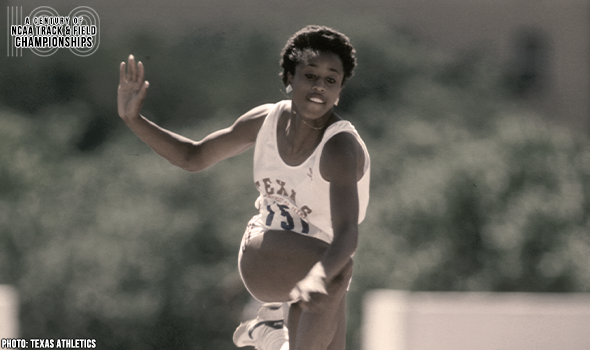
Texas’ Turner Soared To Triple Jump Greatness
Terri Turner was a two-time TJ champion at the NCAA DI Outdoor T&F Championships. When Turner won her 2nd title in 1986, she set an all-time world best of 13.66m (44-9¾).
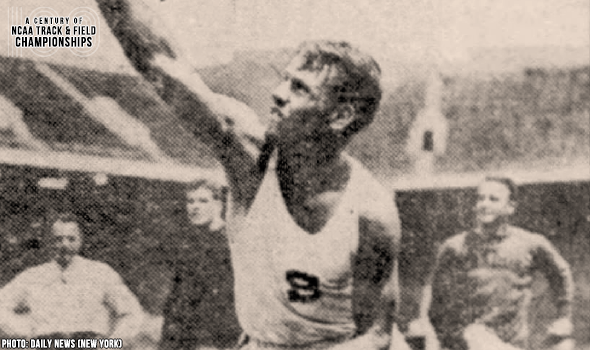
Stanford’s Rothert Starred In The Shot Put
Harlow Rothert won three consecutive shot put titles at the NCAA Outdoor T&F Championships between 1928 & 1930. He set meet records in both 1929 and 1930.

Indiana’s Kharun Set Javelin MR In 2003
Irina Kharun won the javelin title at the 2003 NCAA DI Outdoor T&F Championships with a meet record heave of 61.82m (202-10). It also helped her win by more than 30 feet!
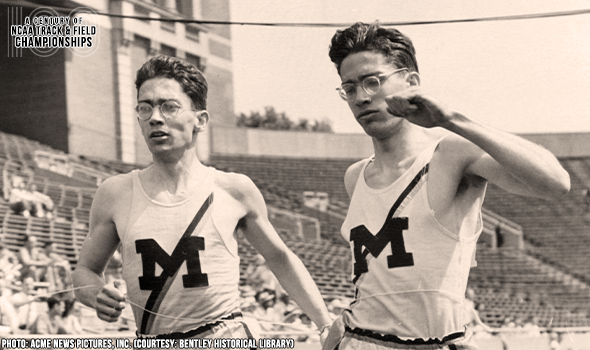
Hume Brothers Had Officials Seeing Double
Twins Robert & Ross Hume purposefully tied for the mile crown at the 1944 NCAA Outdoor Track & Field Championships. They tried again in 1945, but officials gave Ross the win.
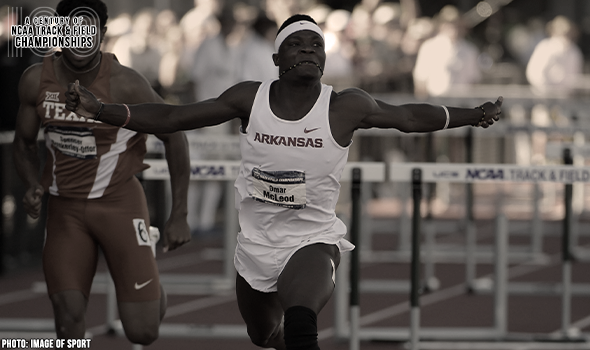
Woo Pig Sooie! McLeod Sizzled Track In 2015!
Omar McLeod clocked a sizzling 13.01 (+3.9) to win the 110HH at the 2015 NCAA DI Outdoor T&F Championships. Only one man had ever gone faster in meet history at the time.

Felicien Starred In The 100H At NCAAs
Perdita Felicien won back-to-back 100H titles at the NCAA Division I Outdoor T&F Championships in 2002 & 2003. She set a MR of 12.68 in the semifinals on the way to title No. 2.

Truly “Unbroken,” Zamperini Shined At NCAAs
Louis Zamperini set a meet record in the mile of 4:08.3 at the 1938 NCAA Outdoor T&F Championships. Zamperini, who also won the mile in 1939, saw his record last 15 years.

Hughes Soared To Three Consecutive HJ Titles
Tanya Hughes was the first woman to win three high jump titles at the NCAA Division I Outdoor T&F Championships. Hughes did so consecutively in 1991, 1992 & 1993.
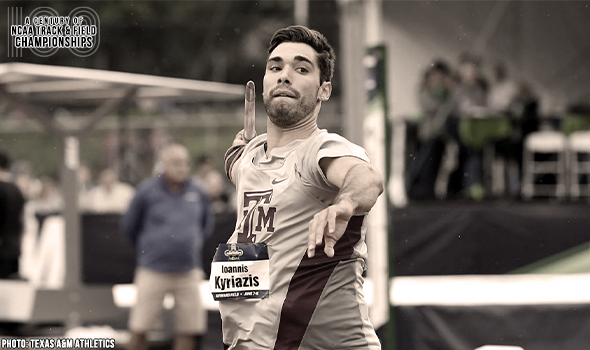
Kyriazis Made Point With Javelin In 2017
Ioannis Kyriazis set a meet record in the javelin of 82.58m (270-11) and won by more than 19 feet at the 2017 NCAA DI Outdoor T&F Championships.
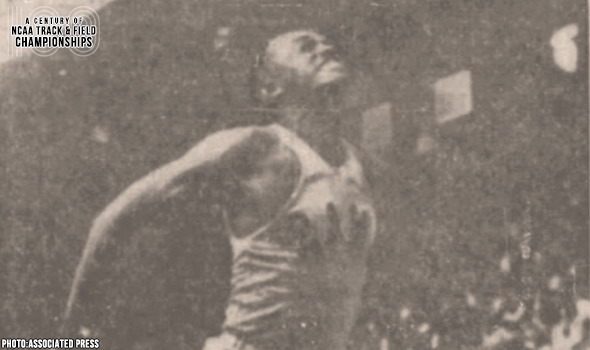
Sharpe Bounded To Meet History In 1956
Bill Sharpe became the first man to eclipse the 50-foot barrier in the triple jump at the NCAA DI Outdoor T&F Championships in 1956. Sharpe won with his 15.36m (50‑4¾) effort.

